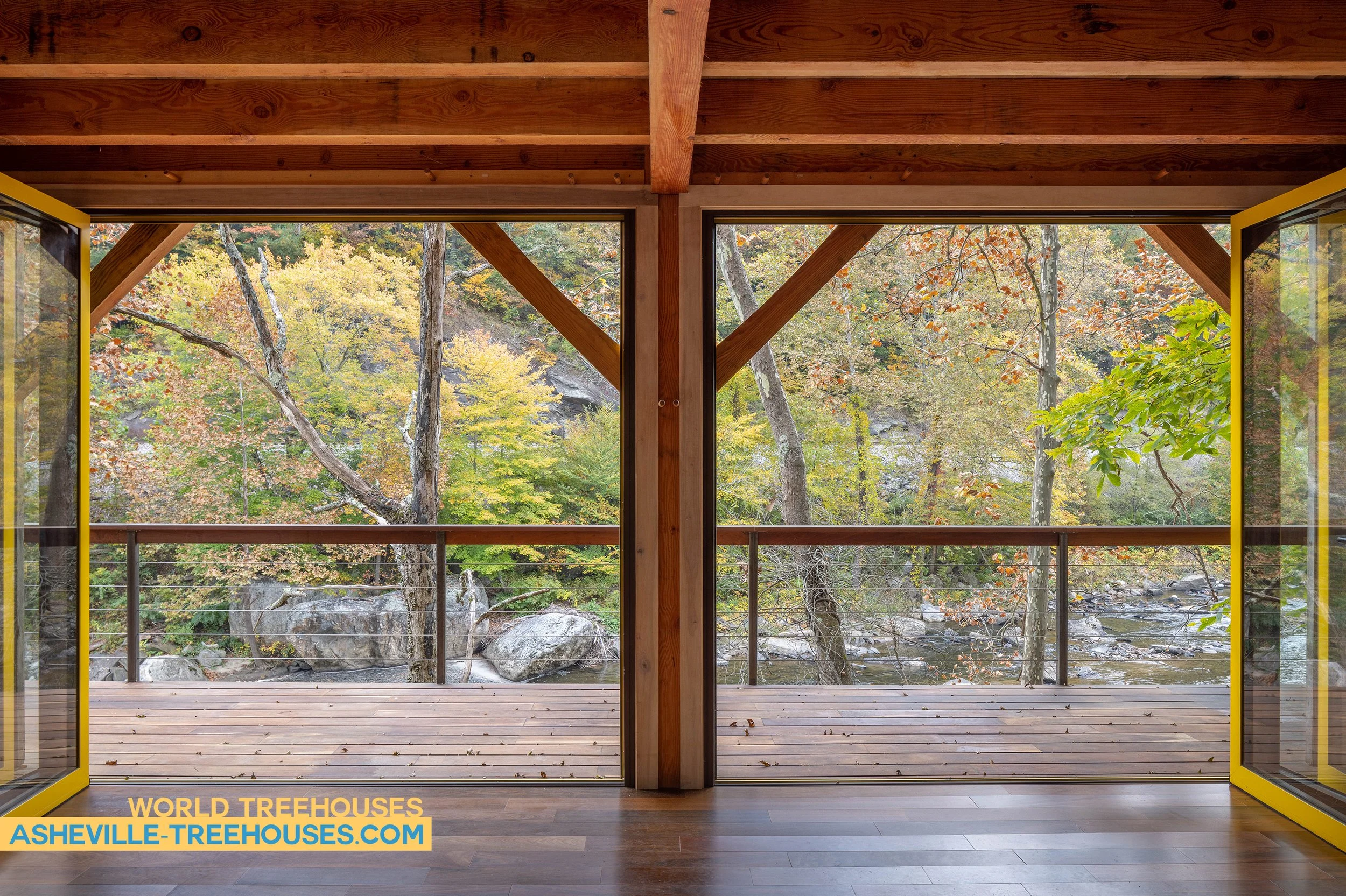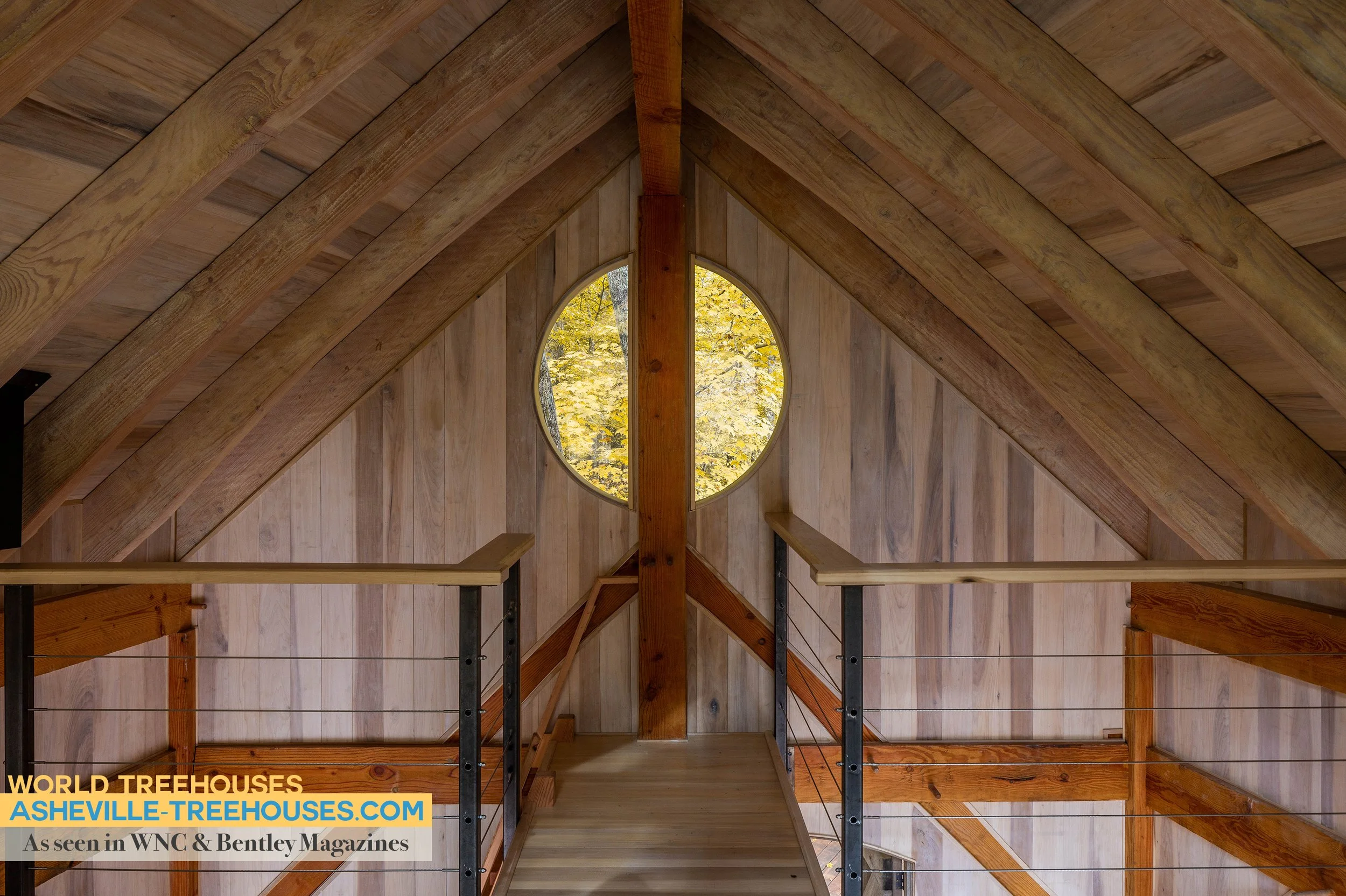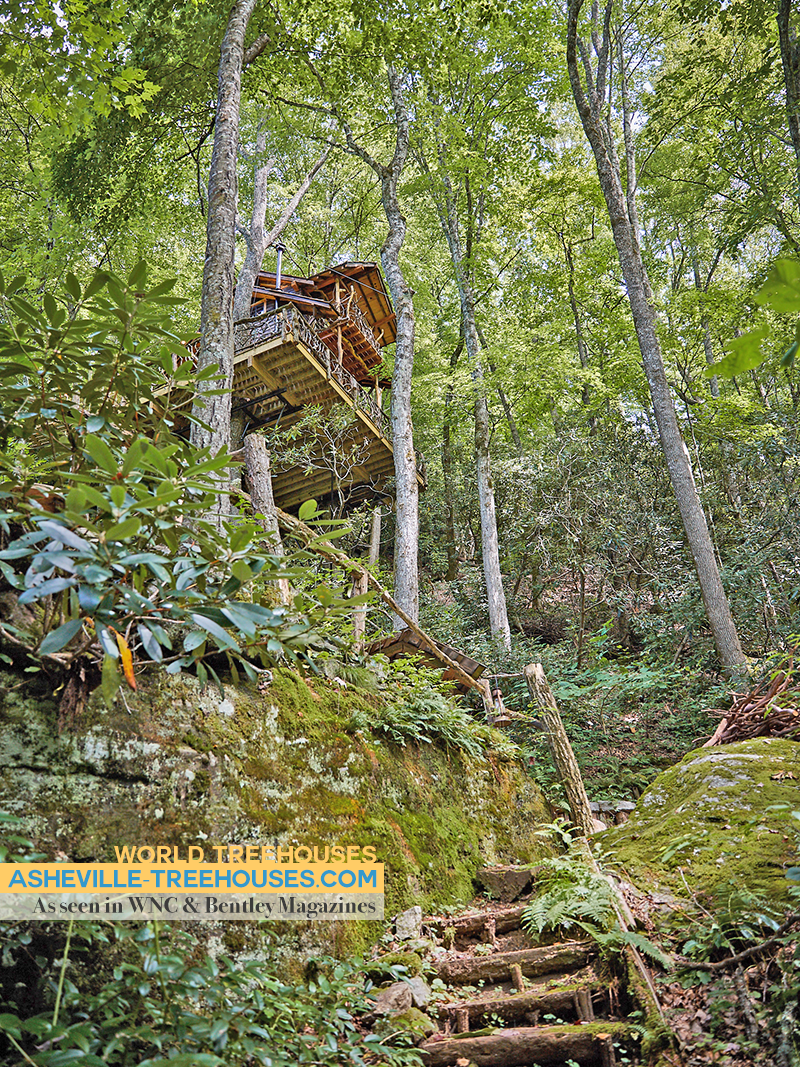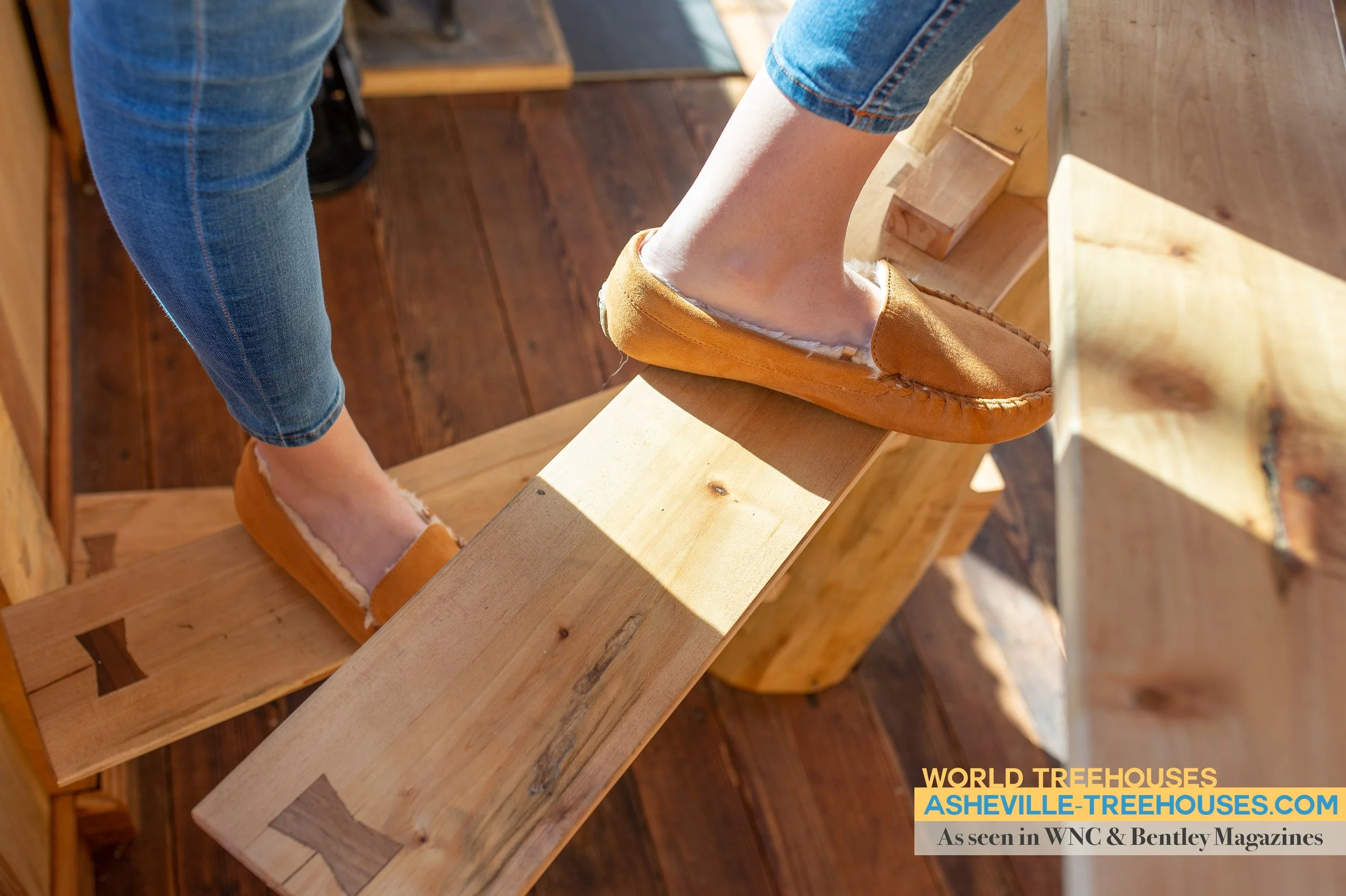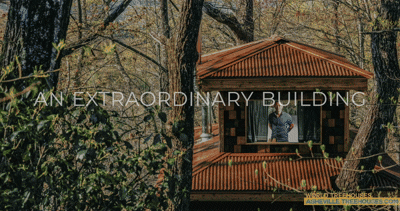You’ve got land in Western North Carolina boasting loads of natural beauty and larger-than-life trees. You want to take advantage of it all—the breathtaking views, the healing properties of the forest, the creative power, the fresh air, the tranquility. Desiring to build a treehouse retreat to share with your loved ones, you wonder, “What will it take to build my own piece of heaven in the treetops?”
As Asheville-area’s number one custom treehouse builder with years of experience, we’ve answered the most commonly asked questions about hand-crafted, rustic-luxe and high-end treehouses, and compiled them here for you.
Click on the links below to read answers to our most commonly asked questions.
Does Building in the Trees Harm Them?
How Do I Choose the Right Trees for My Treehouse?
Are Treehouses Safe?
How Much Does a Treehouse Cost?
Will My Treehouse Need a Permit?
Can I Visit a World Treehouses of Asheville Project?
Can You Incorporate Reclaimed Materials into a Treehouse?
Additional Questions
Do You Sell Do-it-Yourself Treehouse Kits or Plans?
We do not sell plans or kits because each site and situation is very different. Additionally, as artisans, we start with expert design services and incorporate high-quality craftsmanship into each custom treehouse project for every client...considering their style, preferences, treehouse dreams, and needs. It is rare that we will build an Airbnb-type vacation rental because our heart’s desire is to craft the place for a lifetime of unforgettable experiences for our private clients on their own personal Western NC property.
Are You Insured?
As a professional luxury treehouse builder, we are covered by liability insurance, as are our contract workers.
How Long Does it Take to Build a Treehouse?
Depending on size, detail, and complexity of your own treehouse building, the build process can take anywhere from three months to a year for us to build a custom luxury treehouse. Is it a bespoke, adults-only romantic getaway you want? A remote, peaceful hideaway? A larger-than-life fairytale playhouse with breathtaking views and a swinging bridge? Will the living space be large and bright or quirky and cozy? Will your new treehouse stand simple in the beauty of its construction, or will it include a kitchen, bathroom, wood stove, or sleeping porch? Many of these amenities and design factors will be the result of lead builder Adam Laufer’s ingenuity and appropriate application of your needs to your specific site. Adam designs by listening to each client, but also to the trees and what the land is offering up. Regardless, they are the factors that will influence the length of time it takes to build your treehouse.


